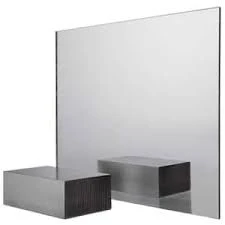

The Role of Infrared Reflecting Glass in Modern Architecture
In the realm of modern architecture and building design, energy efficiency is a paramount concern. One innovative solution that has emerged in recent years is the use of infrared reflecting glass. This advanced glazing technology plays a vital role in enhancing energy conservation, improving comfort, and achieving sustainable building practices.
Infrared reflecting glass is specifically engineered to reflect a significant portion of infrared radiation, which is primarily responsible for heat transfer. Traditional glass allows sunlight to enter buildings, which can lead to increased indoor temperatures, especially during peak summer months. This results in higher air conditioning demands, leading to increased energy consumption and operational costs. By reflecting infrared rays while allowing visible light to penetrate, infrared reflecting glass strikes an ideal balance between natural illumination and thermal regulation.
The construction industry has witnessed a paradigm shift in the adoption of this technology. Buildings equipped with infrared reflecting glass can maintain comfortable indoor environments without excessive reliance on artificial cooling systems. This not only benefits the occupants by providing a more pleasant atmosphere but also contributes to lower energy bills and reduced carbon footprints. Additionally, this glass type helps in minimizing glare, thus improving the overall visual comfort within a space.

Moreover, the aesthetic appeal of infrared reflecting glass cannot be overlooked. Available in various tints and finishes, it allows architects to create visually striking facades while enhancing the energy performance of the building. By modernizing the external appearance of structures without compromising on functionality, infrared reflecting glass has become a popular choice among designers seeking sustainable solutions.
Beyond commercial applications, infrared reflecting glass is increasingly used in residential buildings. Homeowners are becoming more environmentally conscious and are seeking ways to reduce energy consumption. By installing infrared reflecting glass windows, they can enjoy natural light and views while benefiting from increased energy efficiency. This trend not only leads to healthier living spaces but also aligns with global efforts towards more sustainable living practices.
In addition to energy savings, infrared reflecting glass also offers enhanced durability and safety. Many variants are designed to withstand extreme weather conditions, providing longevity and reducing the need for frequent replacements. Furthermore, advancements in coating technologies have made it possible to produce glass that is both energy-efficient and resistant to scratches and other forms of wear.
In conclusion, the integration of infrared reflecting glass into building design marks a significant step toward sustainability and energy efficiency. By minimizing heat gain, leveraging natural light, and enhancing aesthetic appeal, this innovative material contributes to more comfortable and environmentally friendly living and working spaces. As architects, builders, and homeowners continue to embrace green building practices, infrared reflecting glass stands out as a crucial element in the evolution of modern architecture. Its capacity to marry form and function demonstrates that thoughtful design can lead to a more sustainable future.